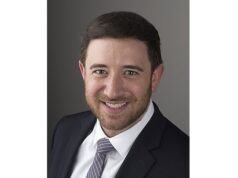VIVA Physicians recently hosted a virtual roundtable to address COVID-19. Tony Das (Connected Cardiovascular Care Associates, Dallas and BSW Heart Hospital, Plano, USA), one of the VIVA Board Directors, lead the discussion, addressing topics such as resource management, triage, and telemedicine.
Das was joined by four other specialists—Niten Singh (University of Washington, Seattle, USA), Saher Sabri (MedStar Washington Hospital Center, Washington, DC, USA), Raghu Kolluri (OhioHealth Riverside Methodist Hospital, Columbus, USA), and John Rundback (Holy Name Medical Center, Teaneck, USA).
Das opened the virtual roundtable, available to watch on the VIVA Physicians website, by noting that Singh would have been one of the first to encounter COVID-19 in the USA in his centre in Seattle.
Singh went on to describe the fast-changing situation in the east coast city, noting that what is required is a “mentality change”. He noted in particular the importance of conserving resources. “In big systems, we all have to contribute,” he commented, pointing to the fact that elective vascular surgeries would have to be suspended so that enough resources would be available to cope with an increasing number of COVID-19 patients.
Singh also pointed to the issue of vascular patients being exposed to the virus whilst in hospital. “Our patients are generally in that age group where they are the most vulnerable to exposure and having a bad outcome with the contraction of COVID-19,” he remarked.
“Nobody stays in the hospital,” Singh added, elaborating that “if consultations can be managed telephonically, we do that.”
Singh also pointed out that, aside from clinical obligations, “fellows and residents still need teaching”. In this case, remote medicine is playing an important role.
Next to speak was Sabri, who mentioned that vascular surgeons and interventionalists are facing difficult decisions about who to treat and who not to treat, adding that “the triage process gets tighter” the more serious the COVID-19 situation becomes.
With regards to PPE [personal protective equipment], Sabri noted that, in his centre, they have started rationing their supply.
“We have to be vigilant,” said Sabri, urging fellow physicians to “think ahead”.
Raghu Kolluri (OhioHealth Riverside Methodist Hospital, Columbus, USA) was next to speak. He began by pointing out that his centre has not yet experienced a large number of cases but that they are expecting a surge in the near future.
The vascular lab “needs to be prepared,” he commented. He pointed out that it is a priority for him to be supportive of sonographers at this time—both from a triaging perspective and emotionally.
Last to speak was John Rundback (Holy Name Medical Center, Teaneck, USA), who is recovering from COVID-19.
He details that he likely contracted the virus in early March from a patient during regular office hours. “We have to assume we are getting infected by every patient walking in,” he said, adding that healthcare professionals are being “exposed in ways we cannot possibly anticipate”.
In terms of his practice, Rundback outlines that he has been “busy at home calling every single patient and triaging them appropriately,” stressing the importance of communication during this time, especially with elderly patients—making up the majority of vascular cases—who may have difficulty accessing telemedicine.
Rundback ended by emphasising that “CLI is not an elective thing,” noting that there are 300 amputations every day in the USA. “This is a serious matter.”
“The practice can adapt”
Das concluded the roundtable discussion on a positive note. “There is always good that comes out of these tragedies,” he began, elaborating that “untethering patients from hospitals and from offices is the reality of where this system is going”.
“The practice can adapt,” he continued. “This pandemic is creating an environment where I think everyone will say ‘I am not just going to do telemedicine right now, I am going to actually start to understand the infrastructure and the tools that are out there to be able to implement those in the future.’”
Considering the long-term impact of telemedicine, he gave the example that “CLI patients deserve more of a check-in than every six months”.










